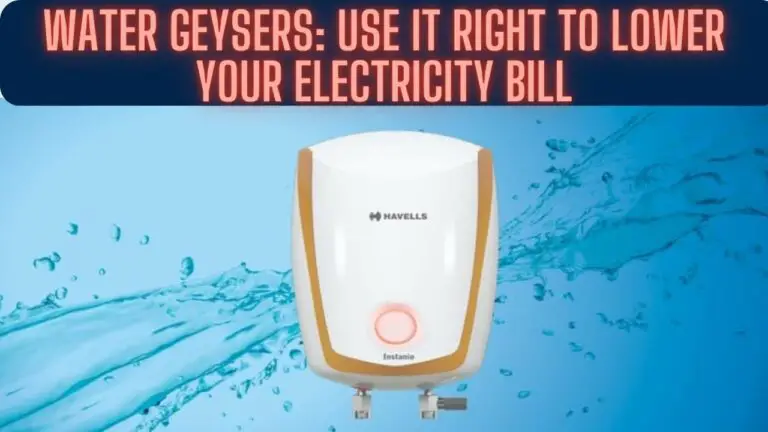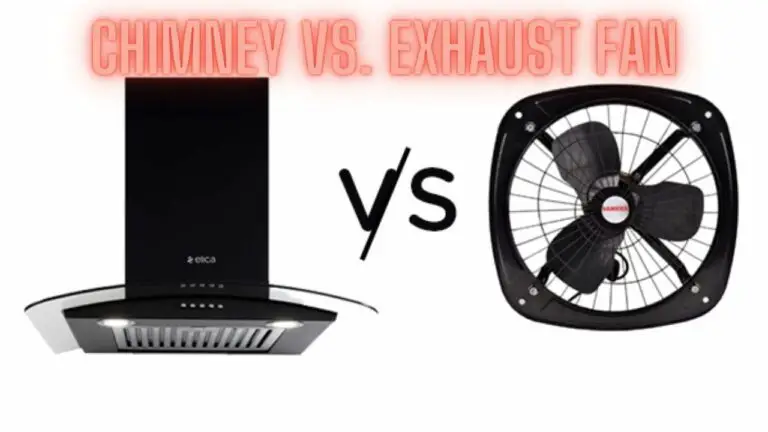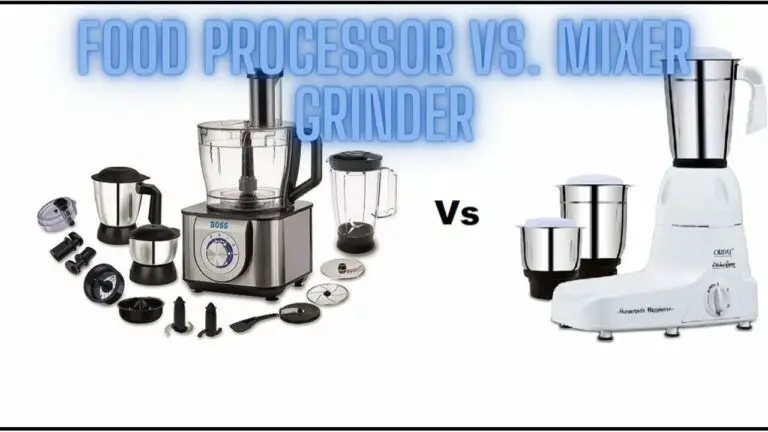What are Dehumidifiers and How Does a Dehumidifier Work?
Introduction
Dehumidifiers are appliances designed to reduce the level of humidity in the air within a confined space, such as a room or building. High humidity can lead to discomfort, mold growth, musty odors, and damage to property, making dehumidifiers essential in maintaining a healthy indoor environment.
These devices work by drawing in moist air, removing excess moisture, and then circulating drier air back into the room. They are commonly used in homes, offices, basements, crawl spaces, and other areas where humidity levels tend to be high.
Dehumidifiers come in various types, sizes, and capacities to suit different needs and environments. Understanding how they work and their benefits can help individuals make informed decisions about controlling indoor humidity levels and improving overall air quality.
Understanding Humidity
Humidity refers to the amount of water vapor present in the air. It is a crucial aspect of the atmosphere’s composition and plays a significant role in various environmental factors, including weather patterns, comfort levels, and the health of living organisms.
There are several ways to measure humidity, but the most common units used are relative humidity (RH) and absolute humidity.
- Relative Humidity (RH): Relative humidity is a measure of the amount of water vapor present in the air compared to the maximum amount the air can hold at a given temperature. It is expressed as a percentage and indicates how saturated the air is with moisture. For example, if the relative humidity is 50%, it means the air contains half of the maximum amount of moisture it can hold at that temperature.
- Absolute Humidity: Absolute humidity is the actual amount of water vapor present in a unit volume of air, typically measured in grams per cubic meter (g/m³) or grains per cubic foot (gr/ft³). Unlike relative humidity, absolute humidity provides a more direct measurement of moisture content in the air, regardless of temperature changes.
Humidity levels can vary greatly depending on factors such as climate, geographic location, weather conditions, and indoor activities. Generally, higher temperatures can hold more moisture, leading to higher relative humidity levels, while colder temperatures can result in lower humidity levels.
Understanding humidity is essential for maintaining indoor comfort, preserving property, and promoting health. High humidity levels can lead to issues such as mold growth, musty odors, condensation, and discomfort, while low humidity levels can cause dry skin, respiratory problems, static electricity, and damage to wooden furniture and musical instruments.
Dehumidifiers play a crucial role in regulating indoor humidity levels by removing excess moisture from the air, thereby creating a more comfortable and healthier living environment.
Importance of Controlling Humidity Levels
- Comfort: Maintaining optimal humidity levels in indoor environments contributes to overall comfort. Excessively high humidity can make the air feel heavy and uncomfortable, leading to feelings of stickiness and clamminess. On the other hand, low humidity can cause dryness and irritation of the skin, eyes, and respiratory system.
- Health: Proper humidity control is essential for promoting good health. High humidity levels create favorable conditions for mold, mildew, and dust mites to thrive, which can exacerbate allergies and respiratory problems. Additionally, damp environments can contribute to the growth of bacteria and viruses. Conversely, excessively dry air can lead to respiratory issues, aggravate asthma symptoms, and increase susceptibility to respiratory infections.
- Preservation of Property: Controlling humidity levels is crucial for protecting property and belongings. High humidity can cause damage to wood furniture, musical instruments, electronics, and artwork by promoting mold growth, warping, and corrosion. Low humidity levels can also be detrimental, causing wooden objects to shrink, crack, or split.
- Prevention of Structural Damage: Excessive moisture in the air can lead to condensation on windows, walls, and ceilings, potentially causing water damage and promoting the growth of mold and mildew. Over time, prolonged exposure to high humidity levels can compromise the structural integrity of buildings and lead to costly repairs.
- Energy Efficiency: Maintaining proper humidity levels can improve energy efficiency in buildings. When indoor air is too humid, air conditioning systems must work harder to remove moisture, resulting in increased energy consumption and higher utility bills. Conversely, in dry environments, heating systems may need to work harder to maintain comfortable temperatures, leading to higher energy costs.
- Comfortable Sleep Environment: Proper humidity control can contribute to a comfortable sleep environment. Excessively high or low humidity levels can disrupt sleep patterns, leading to discomfort and sleep disturbances. Maintaining optimal humidity levels can help individuals achieve restful sleep and wake up feeling refreshed.
Overall, controlling humidity levels is essential for maintaining a comfortable, healthy, and safe indoor environment while protecting property and promoting energy efficiency. Dehumidifiers play a crucial role in achieving and maintaining optimal humidity levels, thereby improving overall indoor air quality and comfort.
Components of a Dehumidifier
- Compressor: In compressor-based dehumidifiers, the compressor is a vital component responsible for compressing refrigerant gases to increase their pressure and temperature.
- Condenser Coil: The condenser coil is where the compressed refrigerant releases heat to the surrounding air, causing it to condense from a vapor to a liquid state.
- Evaporator Coil: The evaporator coil is located after the condenser coil and is where the refrigerant expands, allowing it to absorb heat from the incoming humid air, causing moisture to condense.
- Fan: The fan circulates air through the dehumidifier, drawing in moist air from the environment and directing it over the evaporator coil to facilitate the dehumidification process.
- Drainage System: Dehumidifiers typically have a drainage system to collect and remove the condensed moisture. This may include a collection bucket or tray that needs to be emptied manually or an automatic drainage system that directs water to a drain or reservoir.
- Humidistat: The humidistat is a sensor that measures the relative humidity level in the air. It controls the operation of the dehumidifier by turning it on or off based on the desired humidity setting.
- Control Panel: The control panel allows users to adjust settings such as humidity levels, fan speed, and timer functions.
- Air Filter: Many dehumidifiers feature an air filter that traps dust, debris, and other particles from the air as it passes through the unit. Regular cleaning or replacement of the air filter helps maintain optimal performance and air quality.
- Housing/Casing: The housing or casing encloses the internal components of the dehumidifier and often includes vents for air intake and exhaust.
- Refrigerant: Refrigerant is the fluid used in compressor-based dehumidifiers to facilitate the cooling and dehumidification process. It circulates through the compressor, condenser coil, expansion valve, and evaporator coil to absorb and release heat.
These components work together to remove excess moisture from the air, reduce humidity levels, and improve indoor air quality. Depending on the type and model of the dehumidifier, additional features and components may be included to enhance functionality and performance.
How Does a Dehumidifier Work?
Dehumidifiers work by removing excess moisture from the air, thereby reducing humidity levels in indoor environments. The process involves several key steps:
- Air Circulation: The dehumidifier draws in moist air from the surrounding environment through a fan. This air is typically warm and humid, such as the air found in basements, bathrooms, or other areas prone to high humidity levels.
- Cooling Process: As the humid air enters the dehumidifier, it passes over a set of coils containing a refrigerant. The refrigerant absorbs heat from the air, causing it to cool down. This cooling process also lowers the temperature of the refrigerant.
- Condensation: As the air cools, its ability to hold moisture decreases, leading to condensation. The moisture in the air condenses into water droplets, which accumulate on the coils or a separate condensation coil within the dehumidifier.
- Drainage: The collected water drips down into a collection bucket or tray located beneath the coils. Some dehumidifiers may feature an automatic drainage system that directs the water to a drain or reservoir, eliminating the need for manual emptying.
- Reheating: After extracting moisture from the air, the now drier and cooler air passes over a separate set of coils containing the warmed refrigerant. This reheating process helps to raise the temperature of the air back to its original level before being expelled from the dehumidifier.
- Release of Dry Air: The dehumidifier releases the drier, warmer air back into the room through an exhaust vent. This newly dehumidified air mixes with the surrounding air, helping to lower overall humidity levels.
- Humidistat Control: Many dehumidifiers are equipped with a humidistat, a sensor that measures the relative humidity level in the air. The humidistat controls the operation of the dehumidifier, automatically turning it on or off to maintain the desired humidity setting.
By repeating this process continuously, dehumidifiers effectively remove excess moisture from the air, creating a more comfortable and healthier indoor environment. Different types of dehumidifiers may employ variations of this basic process, depending on their design and technology.
Types of Dehumidifiers
- Refrigerant (Compressor) Dehumidifiers:
- Compressor dehumidifiers are the most common type and are suitable for most residential and commercial applications.
- They work by drawing in humid air, passing it over a refrigerated coil to condense moisture, and then reheating the air before releasing it back into the room.
- These dehumidifiers are effective at removing large amounts of moisture from the air and are available in various sizes and capacities to suit different needs.
- Desiccant Dehumidifiers:
- Desiccant dehumidifiers use a desiccant material, such as silica gel, to absorb moisture from the air.
- They are particularly useful in colder environments where compressor-based dehumidifiers may struggle to operate efficiently.
- Desiccant dehumidifiers do not require refrigeration and can operate at lower temperatures, making them suitable for use in basements, garages, and other unheated spaces.
- These dehumidifiers tend to be quieter than compressor models but may have lower moisture removal capacities.
- Hybrid Dehumidifiers:
- Hybrid dehumidifiers combine features of both compressor and desiccant models to provide versatile moisture removal solutions.
- They typically use a combination of refrigeration and desiccant technology to optimize performance across a range of temperatures and humidity levels.
- Hybrid dehumidifiers may offer increased energy efficiency and flexibility compared to single-mode dehumidifiers.
- They are suitable for various applications, including residential, commercial, and industrial settings.
- Mini Dehumidifiers:
- Mini dehumidifiers are compact, portable devices designed for small spaces such as closets, bathrooms, RVs, and boats.
- They are often electrically powered and utilize either thermoelectric or desiccant technology to remove moisture from the air.
- Mini dehumidifiers are ideal for addressing localized humidity issues and can be easily moved between different areas as needed.
- Whole-House Dehumidifiers:
- Whole-house dehumidifiers are integrated into a home’s HVAC (heating, ventilation, and air conditioning) system to control humidity levels throughout the entire house.
- These dehumidifiers are typically installed in the ductwork or air handling unit and operate in conjunction with the HVAC system.
- Whole-house dehumidifiers are capable of removing large volumes of moisture from the air and are ideal for maintaining comfortable indoor humidity levels year-round.
Each type of dehumidifier has its advantages and limitations, and the choice of which one to use depends on factors such as the size of the space, humidity levels, temperature, and specific requirements of the application.
Factors to Consider When Choosing a Dehumidifier
- Room Size: Consider the size of the space where the dehumidifier will be used. Choose a dehumidifier with an appropriate capacity (measured in pints of moisture removed per day) to effectively manage the humidity levels in the room. Oversized dehumidifiers may cycle on and off frequently, while undersized units may struggle to keep up with moisture removal.
- Humidity Level: Determine the current humidity level in the room or area where the dehumidifier will be used. If the humidity is consistently high, especially above 50-60% relative humidity, a higher-capacity dehumidifier may be necessary to achieve optimal results.
- Temperature Range: Consider the temperature range of the environment where the dehumidifier will operate. Compressor-based dehumidifiers may be more effective at higher temperatures, while desiccant models may perform better in colder environments.
- Energy Efficiency: Look for ENERGY STAR certified dehumidifiers, which are more energy-efficient and can help save on utility costs over time. Consider the unit’s energy efficiency rating (measured in Energy Factor or EF) and choose a model with a higher rating for optimal energy savings.
- Drainage Options: Determine whether you prefer a dehumidifier with a built-in pump for continuous drainage to a drain or sink, or if manual emptying of a collection bucket is acceptable. Some models also offer the option for gravity drainage or connection to a condensate pump.
- Noise Level: Consider the noise level of the dehumidifier, especially if it will be used in living spaces or bedrooms. Look for models with low decibel (dB) ratings for quieter operation.
- Portability and Mobility: If you plan to move the dehumidifier between rooms or areas, consider the unit’s size, weight, and mobility features such as built-in handles and caster wheels for easy transport.
- Additional Features: Look for extra features that may enhance convenience and usability, such as adjustable humidity settings, programmable timers, digital displays, automatic defrost function (useful for colder environments), and washable or replaceable air filters.
- Budget: Determine your budget for purchasing a dehumidifier and compare prices across different models. Keep in mind that while upfront costs may vary, energy-efficient models may offer long-term savings on operating costs.
- Brand Reputation and Warranty: Research the reputation of different dehumidifier brands and consider the length and coverage of the warranty offered. Choose a reputable brand known for quality products and reliable customer support.
By considering these factors, you can select a dehumidifier that meets your specific needs and effectively manages humidity levels in your home or other indoor spaces.
Benefits of Using a Dehumidifier
- Improves Indoor Air Quality: Dehumidifiers help remove excess moisture from the air, reducing the risk of mold, mildew, and dust mite growth. This leads to cleaner and healthier indoor air, which is beneficial for individuals with allergies, asthma, or other respiratory conditions.
- Prevents Mold and Mildew Growth: Excess humidity can create an ideal environment for mold and mildew to thrive. By maintaining optimal humidity levels, dehumidifiers help prevent mold and mildew growth on walls, ceilings, furniture, and other surfaces, protecting your home and belongings from damage.
- Reduces Musty Odors: Damp and humid environments often develop musty odors caused by mold, mildew, and bacteria. Dehumidifiers remove excess moisture from the air, reducing musty odors and creating a fresher-smelling indoor environment.
- Protects Property: High humidity levels can cause damage to wooden furniture, electronic devices, artwork, and other valuables. By controlling humidity levels, dehumidifiers help prevent warping, swelling, corrosion, and other forms of damage, extending the lifespan of your belongings.
- Improves Comfort: Excessive humidity can make indoor spaces feel sticky, clammy, and uncomfortable. Dehumidifiers help create a more comfortable living environment by reducing humidity levels and promoting better air circulation, especially during hot and humid weather.
- Reduces Allergens and Irritants: Dust mites, mold spores, and other allergens thrive in humid environments. By reducing humidity levels, dehumidifiers help minimize the presence of allergens and irritants in the air, providing relief for individuals with allergies, asthma, or other respiratory conditions.
- Prevents Condensation: High humidity levels can lead to condensation on windows, walls, and other surfaces, which can promote mold growth and cause water damage. Dehumidifiers help prevent condensation by maintaining optimal humidity levels, reducing the risk of structural damage and moisture-related issues.
- Increases Energy Efficiency: By reducing humidity levels, dehumidifiers can help improve the efficiency of air conditioning systems. When indoor air is less humid, air conditioners do not need to work as hard to remove moisture, resulting in lower energy consumption and reduced cooling costs.
- Helps Control Pests: Many pests, such as cockroaches, silverfish, and certain types of ants, are attracted to damp and humid environments. By maintaining optimal humidity levels, dehumidifiers help deter pests and reduce the risk of infestations.
- Preserves Health and Well-being: Overall, the benefits of using a dehumidifier contribute to a healthier and more comfortable indoor environment, promoting better physical health, mental well-being, and quality of life for occupants.
By incorporating a dehumidifier into your home or indoor space, you can enjoy these benefits and create a cleaner, healthier, and more comfortable living environment for yourself and your family.
Common Applications of Dehumidifiers
- Residential Use:
- Basements: Dehumidifiers are commonly used in basements to reduce moisture levels, prevent mold growth, and improve air quality.
- Bedrooms: Dehumidifiers can be used in bedrooms to create a more comfortable sleeping environment and reduce allergens.
- Living Spaces: Dehumidifiers help maintain optimal humidity levels in living rooms, dining rooms, and other common areas of the home.
- Laundry Rooms: Dehumidifiers can help dry damp laundry rooms and prevent musty odors caused by excess moisture.
- Commercial Use:
- Offices: Dehumidifiers are used in office buildings to maintain comfortable indoor environments and protect equipment and furnishings from humidity-related damage.
- Retail Spaces: Dehumidifiers help control humidity levels in retail stores to create a pleasant shopping experience and protect merchandise.
- Restaurants: Dehumidifiers are used in commercial kitchens and dining areas to control moisture levels, reduce condensation, and prevent mold and mildew growth.
- Industrial Use:
- Warehouses: Dehumidifiers help protect inventory, equipment, and machinery in warehouses by controlling humidity levels and preventing moisture-related damage.
- Manufacturing Facilities: Dehumidifiers are used in manufacturing facilities to maintain stable humidity levels for product quality control and to prevent moisture-related issues in production processes.
- Data Centers: Dehumidifiers help regulate humidity levels in data centers to protect sensitive electronic equipment from moisture damage and ensure reliable operation.
- Hospitality and Healthcare:
- Hotels and Resorts: Dehumidifiers are used in guest rooms, lobbies, and other areas of hotels and resorts to provide comfortable and healthy indoor environments for guests.
- Hospitals and Healthcare Facilities: Dehumidifiers help maintain optimal humidity levels in healthcare settings to promote patient comfort, prevent mold growth, and protect medical equipment.
- Recreational and Specialty Applications:
- Gyms and Fitness Centers: Dehumidifiers are used in gyms and fitness centers to control humidity levels, reduce condensation, and prevent mold and mildew growth.
- Museums and Archives: Dehumidifiers help protect valuable artifacts, documents, and artworks from moisture damage in museums, archives, and cultural institutions.
- Indoor Pools and Spas: Dehumidifiers are used in indoor swimming pools and spas to control humidity levels, reduce moisture-related issues, and improve indoor air quality.
These are just a few examples of the diverse applications of dehumidifiers across various industries and environments. In general, dehumidifiers play a critical role in maintaining optimal humidity levels, protecting property, and promoting health and comfort in indoor spaces.
Maintenance Tips for Dehumidifiers
- Regular Cleaning:
- Clean or replace the air filter according to the manufacturer’s recommendations, typically every few weeks or months, depending on usage and environmental conditions.
- Wipe down the exterior surfaces of the dehumidifier with a damp cloth to remove dust, dirt, and debris.
- Check and Empty the Water Tank:
- Regularly check the water tank or collection bucket for accumulation of condensate. Empty the tank when it reaches full capacity to prevent overflow and water damage.
- Clean the water tank with mild soap and water periodically to prevent mold and bacteria growth.
- Inspect Drainage System:
- If your dehumidifier has a continuous drainage option, ensure that the drainage hose is securely connected and free from obstructions. Test the drainage system periodically to ensure proper functioning.
- Clean the drainage hose and any drainage ports to prevent clogs and blockages.
- Clean the Coils:
- Inspect the evaporator and condenser coils for dirt, dust, and debris buildup. Use a soft brush or vacuum with a brush attachment to gently clean the coils.
- Avoid using harsh chemicals or abrasive materials that could damage the coils.
- Check for Frost Buildup:
- If your dehumidifier is operating in a cold environment, monitor for frost buildup on the coils. Frost buildup can impair the dehumidifier’s efficiency and may indicate a problem with the unit’s operation.
- Allow the dehumidifier to defrost completely before resuming operation. Consider using a model with automatic defrost function for better performance in cold temperatures.
- Inspect the Humidistat:
- Check the accuracy of the humidistat periodically by comparing the relative humidity readings with an external hygrometer.
- Calibrate the humidistat if necessary according to the manufacturer’s instructions.
- Ensure Proper Ventilation:
- Place the dehumidifier in a well-ventilated area with sufficient air circulation to maximize its effectiveness.
- Avoid obstructing air intake and exhaust vents to prevent overheating and reduce strain on the unit’s components.
- Schedule Professional Maintenance:
- Consider scheduling annual professional maintenance for your dehumidifier, especially if it’s part of a larger HVAC system or used in commercial or industrial settings.
- A qualified technician can perform thorough cleaning, inspection, and troubleshooting to ensure optimal performance and longevity of the unit.
By following these maintenance tips, you can help prolong the life of your dehumidifier, maintain its efficiency, and ensure that it continues to effectively control humidity levels in your indoor environment.
Dehumidifiers FAQs
- What size dehumidifier do I need for my space?
- The size of the dehumidifier needed depends on the square footage and humidity level of the space. A larger space or higher humidity level requires a higher capacity dehumidifier. Consult the manufacturer’s guidelines or use sizing charts provided by manufacturers to determine the appropriate size for your space.
- How often should I run my dehumidifier?
- The frequency of running a dehumidifier depends on factors such as the humidity level, temperature, and usage patterns of the space. It’s generally recommended to run the dehumidifier continuously or as needed to maintain a comfortable humidity level, especially in areas prone to high humidity or moisture problems.
- Where should I place my dehumidifier?
- Place the dehumidifier in the area of the room where humidity is most concentrated, such as near windows, doors, or areas prone to moisture buildup. Ensure that the dehumidifier is placed on a flat, stable surface and is not obstructed by furniture or other objects that could restrict airflow.
- How do I know if my dehumidifier needs servicing or repairs?
- Signs that your dehumidifier may need servicing or repairs include reduced effectiveness in removing moisture, unusual noises or odors, frost buildup on coils, and visible damage to components. If you notice any of these signs, it’s recommended to consult the manufacturer’s manual or contact a qualified technician for inspection and repair.
- Can I use a dehumidifier in conjunction with an air conditioner?
- Yes, dehumidifiers can complement air conditioning systems by removing excess moisture from the air, reducing the workload on the air conditioner, and improving overall comfort and energy efficiency. Using both devices together can help maintain optimal indoor conditions, especially during hot and humid weather.
- How do I clean and maintain my dehumidifier?
- Regular cleaning and maintenance are essential for ensuring optimal performance and longevity of your dehumidifier. Clean or replace the air filter regularly, empty the water tank as needed, check for frost buildup on coils, and ensure proper ventilation around the unit. Refer to the manufacturer’s instructions for specific cleaning and maintenance guidelines.
- Can I use a dehumidifier to dry clothes indoors?
- While dehumidifiers can help reduce moisture levels indoors, they are not designed for drying clothes. Drying clothes indoors can significantly increase humidity levels and strain the dehumidifier, potentially leading to reduced effectiveness and increased energy consumption. It’s recommended to use a dedicated clothes drying rack or machine with proper ventilation for drying clothes indoors.
- Are there any safety precautions I should take when using a dehumidifier?
- To ensure safe operation of your dehumidifier, follow safety precautions such as keeping the unit away from water sources, using grounded electrical outlets, avoiding overloading electrical circuits, and unplugging the unit before cleaning or servicing. Additionally, regularly inspect the unit for signs of damage or wear and replace any worn or damaged components promptly.
Conclusion
In conclusion, dehumidifiers play a crucial role in maintaining comfortable, healthy, and safe indoor environments by removing excess moisture from the air. From residential to commercial and industrial settings, dehumidifiers offer numerous benefits, including improved indoor air quality, prevention of mold and mildew growth, protection of property and belongings, and increased energy efficiency.
By understanding how dehumidifiers work, the different types available, and factors to consider when choosing one, individuals and businesses can make informed decisions to meet their specific needs and requirements. Additionally, implementing regular maintenance practices, such as cleaning, inspecting, and servicing the unit as needed, can help maximize its performance and longevity.
Overall, dehumidifiers contribute to creating healthier and more comfortable indoor environments, promoting better physical health, mental well-being, and quality of life for occupants. Whether used in homes, offices, warehouses, or other indoor spaces, dehumidifiers are valuable tools for managing humidity levels and improving overall indoor air quality.







